How to Make Lacto-Fermented Vegetables
Ali Segersten Feb 13, 2012 127 comments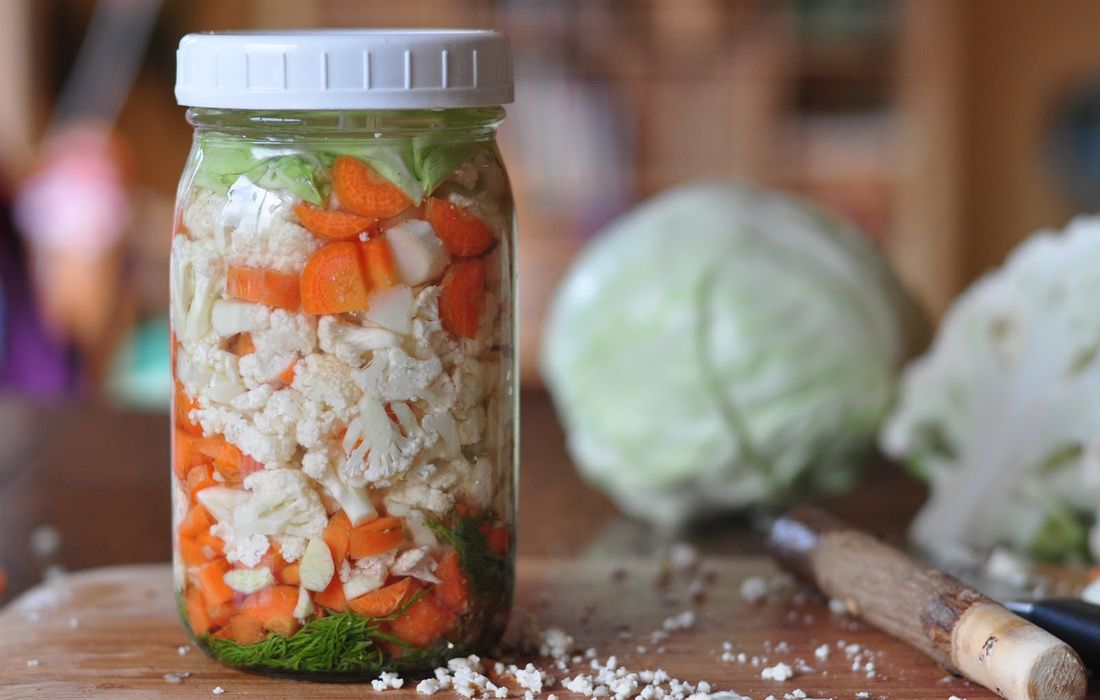
Lacto-fermented vegetables are cultured vegetables. You've probably heard of sauerkraut, kim chi, and sour dill pickles, right? These are all forms of lacto-fermentation. Many people use whey as a starter but it is not necessary as long as you use enough salt. Making your own lacto-fermented vegetables is so easy that once you start you'll be hooked!
Traditionally, lacto-fermentation was used to preserve the harvest and store vegetables for the winter. If you have a garden full of cabbage, cauliflower, beets, carrots, and green beans and don't know how to store them all, consider making a few batches of lacto-fermented vegetables. These veggies can be stored in your refrigerator for months....if they last that long!
Lacto-fermented vegetables provide a viable source of beneficial microbes to help heal and maintain a healthy gut. These beneficial microorganisms attach to receptors in our guts that send a signal to the immune system that says everything is okay, no need to overreact to foods and other things entering the gut, let's keep everything calm. If you are dealing with multiple food sensitivities, chances are your gut is out of balance and is in need of a daily dose of beneficial microorganisms. These crispy, sour, salty vegetables are highly addicting and an easy, economical way to help maintain a healthy gut. These vegetables are also important to include daily if you are following an Elimination Diet.
Use your lacto-fermented vegetables to top cooked quinoa, beans, and chopped leafy greens. Serve them atop grilled fish or chicken. Serve them with scrambled eggs for breakfast. Serve them as an appetizer for a holiday meal. I like to add them to salmon or chicken salads made with mayonnaise. Just try to restrain yourself from eating the whole jar in one sitting....it may be a little too much salt all at once! You can also whisk some of the leftover brine with olive oil, a squirt of dijon mustard, and a dash of honey for a delicious probiotic salad dressing!
Ready to bring more probiotic power into your meals?
Inside our Nourishing Meals® membership, you’ll find a beautiful collection of fermented vegetable recipes—along with the tools to make them part of your daily rhythm. Save your favorites, add them to a personalized meal plan, and instantly generate grocery lists to simplify your week.
✨ Let food be your daily medicine—organized, inspired, and deeply healing.

About the Author
Alissa Segersten, MS, CN
Alissa Segersten, MS, CN, is the founder of Nourishing Meals®, an online meal-planning membership with over 1,800 nourishing recipes and tools to support dietary change and better health. As a functional nutritionist, professional recipe developer, and author of The Whole Life Nutrition Cookbook, Nourishing Meals, and co-author of The Elimination Diet, she helps people overcome health challenges through food. A mother of five, Alissa understands the importance of creating nutrient-dense meals for the whole family. Rooted in science and deep nourishment, her work makes healthy eating accessible, empowering thousands to transform their well-being through food.Nourishing Meals Newsletter
Email updates.
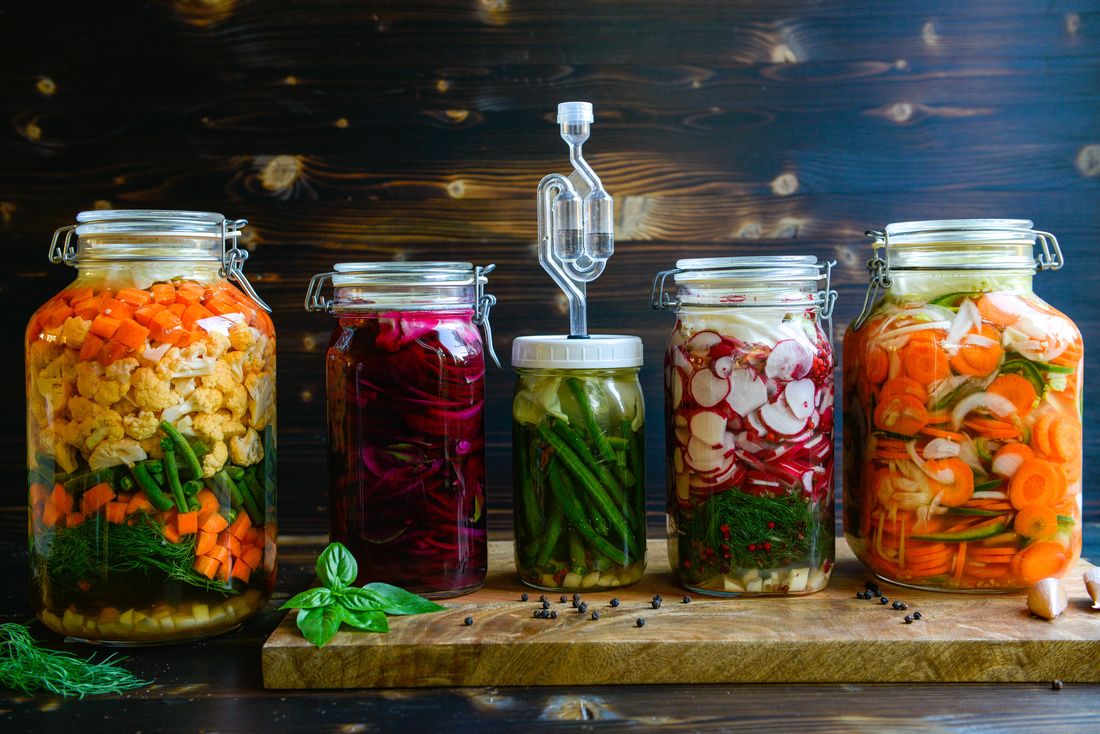
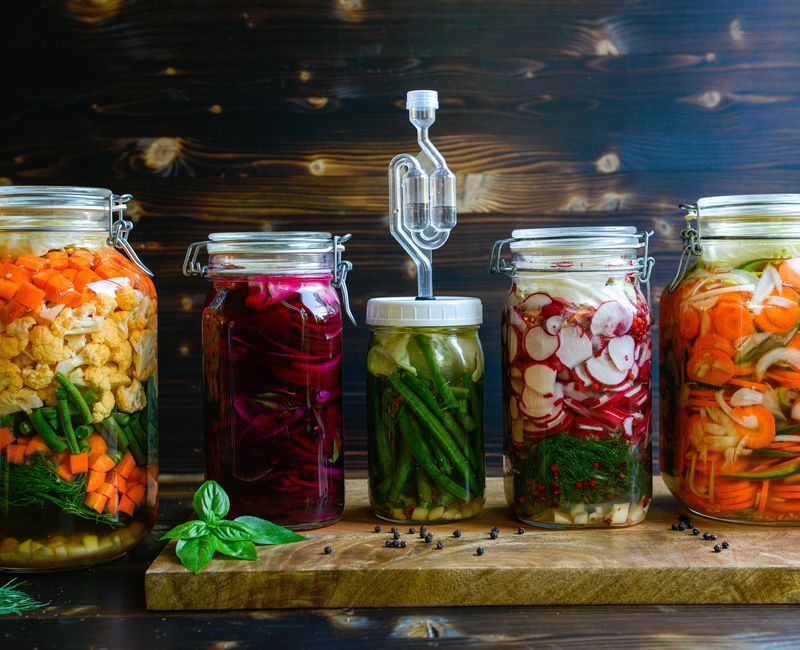

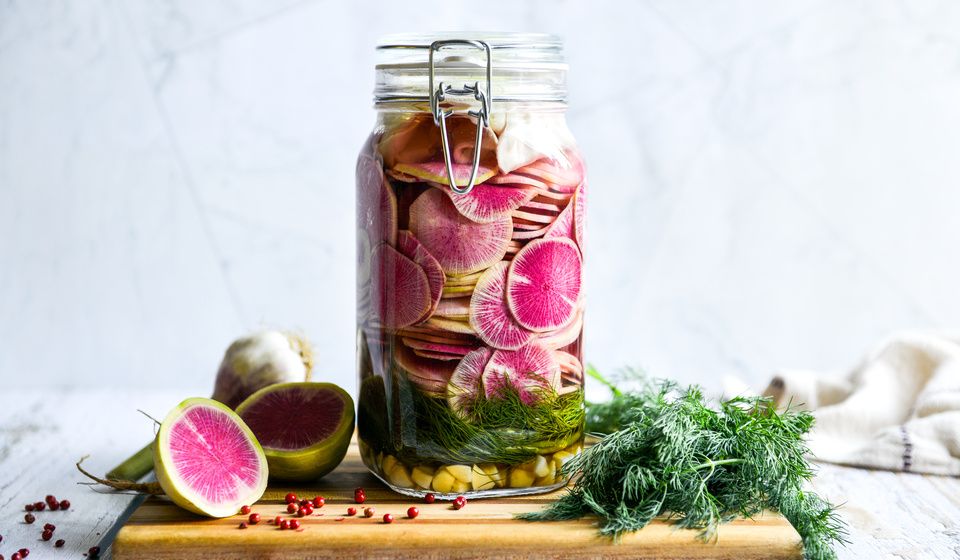



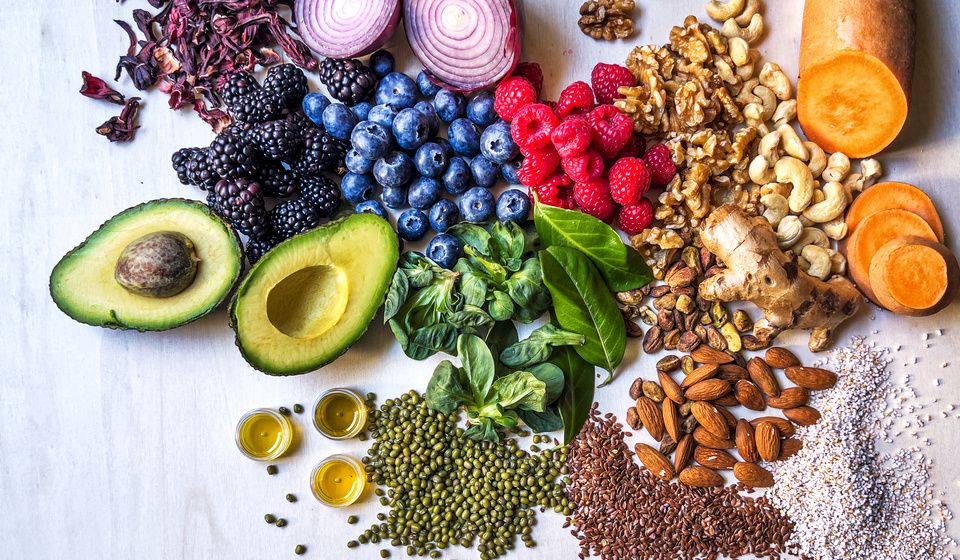
Add Comment
Comments
This looks great! I can't wait to try it! When on the elimination diet (or just in every day life) is there an amount of fermented veggies you would recommend we eat each day?
Can you do this with fruit? I saw on another site that someone made a carrot apple ferment? Thanks!
This is wonderful! I just filled my first two-quart jar of cabbage and carrots. However, I really enjoy having lacto-fermented condiments as well, like mayo and ketchup and salsa. I have always used whey for these--is there a way to make them w/ just the salt?
thanks for producing this wonderful blog. the info is very helpful.
unless i missed it, do you include asparagus as a veggie for fermenting? from what i have read, it is a very healthful veggie and can be eated raw so i thought it would be good for lacto-fermentation. any advice on fermenting asparagus is appreciated. thanks.
I bought a starter culture and put cabbage and carrots in the jar with that. They did not seem to soften, they are crunchy and sour. Is that okay?
Hi,
I just wanted to mention that Lacto-fermented veggies come out so much better when using an airlock system. Our Kraut Kaps are comprised of food safe components. Be cautious of other lids for sale or DIY projects as most use petroleum based grommets and Tattler brand lids which contain formaldehyde.
Whey is mainly used to inoculate your vegetables during open crock fermentation to help guard against undesirable bacteria, molds or yeast. With an airlock system you do away with that risk and the difference between a plain salt and airlock ferment versus an open crock whey ferment is incredible!
I’m offering a free Kraut Kap to a few bloggers willing to try one and give us a review. Let me know if you are interested!
Thanks!
Rochelle
Is there any vegetables to avoid, I am specifically wondering about broccoli and brussel sprouts as my kids love these...
I've been so excited to try this I made a large batch. But I didn't have any quart jars, and every recipe I've found said use a quart Jar. Why is that? I only had a large 3quart(?) with a clap down lid with the rubber gasket. It was really bubbly at first but it's quieted down now and have had to add more water periodically to keep it covered. It's been 8 days now,haven't tasted it yet but since container is so large I figured I would need to let it ferment for at least 10 days. Please advise about the container size, and if larger container is ok. Thanks.
HI Ali
Don't you have to cook green beans before fermenting, because they contain a toxic substance called phasin? And did you use canned green beans before?
Thanks
just made my first batch of veggies! One question...is filtered water from my Pur water filter on my sink ok? I wondered if it removed enough of the chlorine. Thank you for the wonderful notes and video!
I've made these several times, and they're wonderful! So tasty and so simple. Thank you. I'm wondering if you recommend a certain probiotic supplement. I didn't see it mentioned on your site, or in either of your books, but maybe I missed it. It's often overwhelming when trying to make a selection at the health food store, so I'd love to know if you have any favorites. Thank you!
I made these a few days thanks!! now Im addicted.. I wondered though how long until they must go into the fridge? Also I was told if you put one grape leaf into the jar the tannin's in the leaf will help to keep the veggies crisp
First, thank you for your great video.
I tried lactofermenting cabbage for the first time, and after about a week into the fermenting process I left home for about a week, and when I got back, the top inch of the jars were not soaked in water anymore. I had screwed the lids very loosely to allow gas to come out, but then water came out too... I opened the jars; there is no mold and they smell great (I have smelled lactofermented sauerkraut before) BUT the top inch that was not in water anymore has gone slightly darker and, say browner (although not brown at all, just deeper in shade). Do you think it is safe to eat them? Considering some foods are preserved with salt and without water (althgough much more salt is used then)...
Thank you very much for your thought on that... I have refreined myself from eating it (24 days of fermentation now) trying to find some info on that, but I think I will eat some for lunch and I'd be glad to be reassured!
Thank you again,
I tried making lacto fermented veggies about a week ago and they had a little mold right on the top of the cabbage leaf. Do you think they would still be ok to consume if the mold was just on the discarded leaf? I hate to waste them!
Hi there! My grandfather is wanting me to do this for his home grown okra... whole! I told him I think it needs to be chopped, but that I would check with you guys. Please let me know your thoughts if you have a chance, thanks!
Hello Everyone,
I'm a long time listener, first time fermenter. I finally did it yesterday! When I was done my kitchen looked like the scene of a vegetable massacre.
You see, I used a food processor and shredded everything, but now I'm wondering if that is even necessary?
I've read in several places that shredding is needed so that the good bacteria are better able to access the food.
Is that true? I could save so much time by chopping them next time like in the pictures above.
Any feedback on chopping vs. shredding is greatly appreciated.
My veggies ended up turning out very well. They didn't spill over like you mentioned they might do. But they were bubbly and fizzing a little. I hope that's okay. My 11-mo old loves them! Thanks!
--Kristy @ Wine Logic
Ok, finally getting to your questions now! :)
Anon- Chlorine from water is usually a chemical like chloramine which is a broad spectrum anti-microbial so it kills off all of the bacteria--the good and bad. Sodium chloride helps to keep the bad bacteria at bay but does not affect the lactobacilli bacteria. Hope this clarifies it more.
Missy - you can pickle foods with raw vinegar but this is not fermentation.
Ellen - I use a 7.5 liter crock....plus lots of gallon glass jars. :)
Kristy K. - I hope your veggies came out ok! There are 3 teaspoons in 1 tablespoon so you would have needed to add another teaspoon to them. I'd be curious to know if they turned out with that little salt.
Kathryn - leeks would work with any other vegetable. Try carrot-radish-leek. Yum! :)
Laura - Fermented veggies can have a strong smell, especially depending on what veggies you used. In the beginning I do open my jars slightly to release the gasses every day (and then screw them back on).
q - each batch of my veggies always turns out slightly different. Sometimes they are very fizzy, other times not as much. Also, there is no need to boil the jars, just wash in hot water.
michelle - yes, regular cucumbers do get soggy but they are still very edible. Use pickling cucumbers next time and they will be crunchy and crisp! :)
Natalie - I used to do cultured veggies in glass bowls with a plate and towel, but I think that this allows too much air/oxygen to get in and thus leads the veggies susceptible to molding. I would suggest a quart jar or gallon glass jar, put a cabbage leaf on top to make sure the veggies are submerged, and then place a lid on.
I'm doing the fermented veg. for the first time and I'm trying it in glass bolwes. Does the plate sit right on top of the cabbage leaves or laying on top of the glass bowel? Then I should put the towel down? I really need helP!
I have had great success with this twice but the last batch that I did, the cucumbers turned out to be rotting almost... super soggy.
I bought the cukes at the farmer's market but they may have been an English variety... have you had any issues like this before AND are the rest of the veggies okay to eat if I pick out the soggy cuke pieces. THANKS FOR THE INFO!!!!!!!!!!!!
Hi! I have fermented vegetables twice now. The first time, they came out salty and delicious. The most recent time there is a fizz to them. The smell was a noticeably stronger odor, which may be because there was some garlic in the mix (as well as onions). I ate some and my digestion has been a little off (but this may be something else). From reading your other posts, it sounds like the fizz is normal and beneficial. Please clarify. I don't want to throw out this batch if I can be eating it! I did taste the veggies today now that they have been in the fridge for a day or two and they were a little less fizzy. Also, is it essential to boil your jars as one does with canning? Thanks for your help!
Hi I am hoping you can tell me if I did something wrong. I made a couple of batches of veggies and I find the taste great but my husband tells me they smell awful!apparently my bad sense of smell is working to my advantage here... He doesn't want me to open the jar in the house. So I am wondering if I should have let them ferment longer or is that just what they are supposed to smell like. I am hoping that I have done soemthing wrong because I am really enjoying these veggies. Plus, are supposed to open the jars every day to release the gases? Any help you can give me would be fabulous. I love your your recipes and am amazed what you get accomplished everyday!
Hiya, have you tried this with leeks? what would be a nice combo of flavours to go with either full-size or baby leeks? I have an insane amount in my garden this year.
Hi Ali! I just purchased your book and will be trying the 28-day elimination diet soon. I just made 8 quart jars of veggies last night. I was re-reading through the instructions today to make sure I did everything properly and I'm thinking I might have used 1.5 teaspoons instead of 1.5 tablespoons. So, because I was second-guessing myself, I opened the jars and added one more teaspoon of salt per jar. Do you think they will turn out alright? How will I know? Did I totally screw this up? Thanks for your advice!
Ali - which size Harsch crock would you recommend to a first time fermenter? Thanks!!! Ellen (Gluten Free Diva)
I did a batch of pickles last year and they were mushy and effervescent. Only my daughter and I can stomach them (and our body must be starving for the probiotics). This year I got gerkins so they would be cruchier and hold up. It worked, I think they turned out as they should, but the REST of the family still likes the flavor of store pickles. Can you ferment with raw vinegar? The bottle says with mother?? I know my grandma used to make vinegar pickles but I'm assuming they really didn't have the nutritional value that I'm looking for. What about wild fermenting? Thanks!
Why is chlorine from water bad and chlorine from salt is good?
Ok, sorry it has taken me so long to get back to you all here.......
Amy - those plastic lids can be found here: http://www.amazon.com/Ball-Wide-Mouth-Plastic-Storage-8-Count/dp/B000SSN3L2/ref=as_li_tf_cw?&linkCode=waf&tag=wwwglutenfr0d-20
Candice - It really takes at least 5 days to properly ferment vegetables so make sure to do it at least until that time, but sometimes it can take up to 10 days, even if you are seeing a lot of bubbling at 2 days. I sometimes ferment my sauerkraut for 4 to 6 weeks (which is most preferable for cabbage).
Mork - I peel beets before fermenting but not cucumbers. I usually rinse off any dirt on veggies before fermenting.
Angela - I believe that vegetable ferments do contain some beneficial yeasts as well as lactobacilli. I am not sure about the strep stains though, sorry!
Lynn - I've never seen white foam on any of my ferments that I can recall. It may be fine, just scoop it out before consuming.
Kelly H - If you are seeing mold then your vegetables are not properly fermenting. It may also be (see above comment for more reasons) that you have too much oxygen getting into your container. Oxygen allows mold to grow. If you see mold then I would compost your veggies and start over. Using a ceramic fermenting crock can produce better results. I love my Harsch crock! They are worth the investment. You can also use the Pickle-It jars to keep mold from growing: http://www.pickl-it.com/products/ . Hope this helps!
I used 1 1/2 tablespoons of salt and I have after 4 days, I have mold on the top. I have read from other sites to scoop the mold out and it is fine to eat. Your thoughts? I am allergic to mold.
I have a jar of baby carrots lacto fermenting on the counter. They are submered, no exposure to air. I put a plactic baggie of brine on top to weight them down.
I read in the comments if the liquid gets cloudy (mine is after 4 days), it's OK. However, mine has also developed a white foam next to the plastic bad on the top sides (it isn't toughing the carrots). Have you ever had this happen?
Hi Ali! I LOVE your cookbook and love, love the fermented veggies I just made from your recipes here. My question is that I am wondering if fermented foods, using this sea salt method also contain natural yeasts. My son does not do well on these beneficial yeasts, such as S. Boullardi. I have been hesistant to give him the ferments, b/c of this. Also, are any of the "strep" strains naturally occuring in these lacto ferments? We are also avoiding the strep strains with him. Thanks so much!
Quick question - are you supposed to wash and peel the vegetables before fermenting? (I'm wondering about beets and cucumber, specifically) I read somewhere that washing can remove some or most of the good bacteria...
I made these 2 days ago and they are bubbling away on the counter. I can hear them releasing bubbles from across the room! Does this mean they are ready to be transferred to the fridge, even though it's only been 2 days? If I move or shake the jar, there are tons of bubbles. It's not particularly not in my house. I used 1.5 T of salt. They seem very active. Just not sure if you can over-ferment on the counter by leaving them out too long - once they start bubbling?
Thank you, Candice.
where do you get those cool lids for pickling? do they fit on Mason jars?
Little Monkey- Lacto-fermented vegetables are different that other fermented foods not allowed on an anti-candida diet, like wine, beer, and certain types of vinegar. These vegetables are teaming with beneficial bacteria - just the thing you want to be eating daily to overcome yeast overgrowth. The addition of the garlic and onions makes them especially beneficial for getting rid of candida. Raw sauerkraut and kim chi are also great! Enjoy!
So if we are off yeast for 28 days during the elimination diet how can we have fermented veggies in phase 1? I'm sensitive to baker's and brewer's yeast and I can't eat anything fermented. I'm very confused.
Ali - My favorite fermented veggies so far are carrots (with rosemary). Even my two-year-old loves them.
I've used a couple of Tbsp of the brine as a starter on a couple of jars (thus dispensing with the cabbage) and things have turned out fine. I've even tried reusing just the brine for a batch and that worked out, too. Seems like you can get at least two batches of veggies out of a jar of brine.
Here's something interesting that I've noticed. And this might be of interest to those people fermenting their veggies who are turned off by the saltiness. After I fermented the veggies for a week, I put them in the fridge. After being in the fridge for three or more weeks, the salt seems to fall out of solution and collect at the bottom of the jar. This leaves the veggies with a much less salty taste (just the tang of the fermentation). It's hard to wait this long, but the flavor can be worth it. I've duplicated this a couple of times.
Anon - we have not had any issues with mold. Here are some reasons that mold can begin to grow:
-not enough brine covering the vegetables.
-check after 3 days to see if you have enough brine, add more if needed
-ratio of salt to water is off (veggies that contain a lot of water can throw the balance off)
-if you are experiencing mold, use 1 1/2 tablespoons salt instead of 1
-using chlorinated water can kill beneficial microorganisms trying to establish themselves.
-Always use filtered water.
Other sites talk about mold have you had any issues with mold growing on them?
Ali,
Thanks for the reply! So excited for them to be ready!
Tina - Cloudy is perfectly fine. Most of my ferments get cloudy...a sign of a healthy culture! There is natural sediment that can form during fermentation and when the jar is moved, the water can get cloudy.
I was am super excited about this! I made up a jar about 4 days ago, but I have a question. Is the liquid suppose to get cloudy or did I do something wrong? I started three more jars yesterday and I would really hate to have to throw all of them away if I am doing something wrong.
Thanks!
Thanks so much for this post. I am very excited to try it!
Allie - Most veggies can be fermented. As far as I know, potatoes, mushrooms, and winter squash are not good for fermenting. I don't know of any lists but you could check this site for more info on ferments: http://www.wildfermentation.com/
Monifah - Fermented foods are so great for older babies, thanks for sharing how much your baby enjoys them!
Lili - I wouldn't worry about a little sunlight at all. I had 2 jars on the counter once that I forgot to put up on the fridge, they had about 2 days of sunlight before I realized it. They turned out perfectly fine.
Hello I have a quick question about the Fermented Veggies. I made a batch of rainbow color betters and black radishes. I put them on the top of the fridge like but they received some sunlight this weekend. I live in Minnesota and we have not gotten sunshine until this weekend. Should I discard the veggies? I am afraid of food-borne illness. I am appreciated of your work. I love the cookbook! It sits on my kitchen console, when people come over they ask about the cookbook and I don't hesitate to pass along nothing but good reviews. Than you!
Wow!!! first batch ready to eat and my veg are all fizzy!!! Taste's soooo good! I think fizziness is normal?? Fantastic 'recipe', especially the 10 mnth old love´s her cucumber this way. she smiles all over when she feels the tingle on her tongue :)
Thanks for the video! Been reading about "ferments" here and there and hadn't had a chance to do any research. Your video jump started my understanding.
Would you say that your list of veggies is fairly inclusive of what can be used? Maybe the better question is what veggies CAN'T be fermented? Is there this type of can/can't list out there somewhere?
Thanks!
Allie
Cecile - I would suggest screwing the lid back on and letting them ferment for a couple more days. When you are tasting predominately salt and not sour it means that they have not fermented long enough. Sometimes it takes 10 days depending on the temperature in your home. The cooler your house the longer it will take. Also, using more salt slows down fermentation. A couple of days from now they will be tangy and delicious! :)
I just tasted my first batch, they are fairly salty. Are they supposed to be that way? I used 1.5 tbls of sea salt. It has been 5 days. Thank you for sharing such a helpful video, we've been wanting to make these for some time but I've been a little to scared to try!!
Thanks everyone for the comments! I am glad this post and video are helpful. Some things just have to be demonstrated by video. We are hoping to do more of this, time-permitting! :)
Lindsay - You can check our elimination diet FAQ page to answer those questions: http://www.wholelifenutrition.net/id16.html
Anon - Yes, if you find a little scum floating on the top, just scoop it out.
Jacob - Thanks for experimenting with the lemon, I didn't think it would work, nice to hear you confirm this. As far as using the brine over....I have heard people doing this, however, you need to be careful about diluting the brine. Vegetables contain water, so your ratio of salt/water would be thrown off. You can add a few tablespoons of leftover brine to "start" your next batch. I've also added it to bowls of soup (a few tablespoons) for flavoring and nutrition.